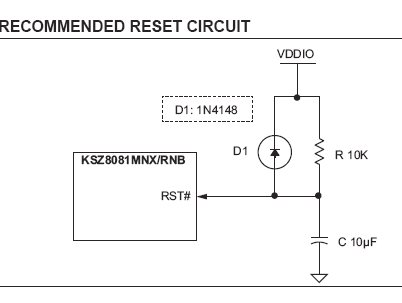Other Parts Discussed in Thread: DRA714, DRA746
Hello
We use Micrel KSZ8081MNX to receive MII signal from DRA744 before, and it's working. We change component to another MPN,Micrel KSZ8081RNB, receiving RMII signal now.
It's not working, is there new driver to update?KSZ8081MNX-RNB_DS00002202A.pdf



